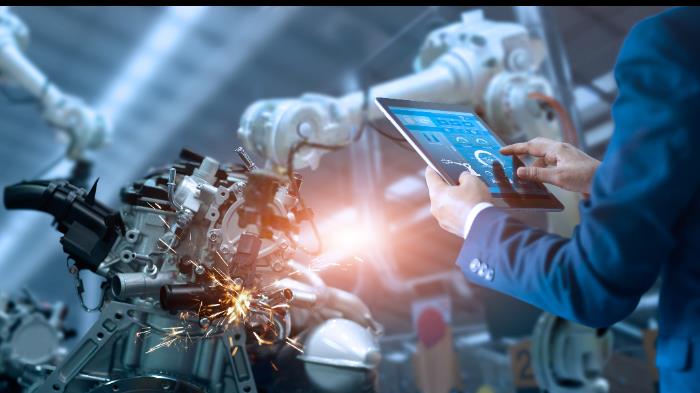The manufacturing industry is constantly evolving. Industry 4.0 is a digital transformation of the manufacturing industry, leveraging data and convergence of information and operational technologies to identify factories connected in a tangible environment through controlled by information.

Manufacturing is in a new era where the real world converges with the digital world. It is often referred to as Industry 4.0, which is capable of changing the way products are created, the way they manage supply chains, and how they define value chains. For global businesses, this offers the opportunity to gain a new competitive advantage thanks to higher productivity, agility, flexibility and shorter time to market products.
However, the speed of application is uneven among businesses. The lack of a clear vision, strategy and systematic roadmap are the biggest challenges that hinder the adoption of Industry 4.0. What are many organizations looking for answers to questions like Industry 4.0? How can Industry 4.0 benefit my business? Where should I start? What is the current business gap and what are tomorrow's opportunities?
To help organizations start transforming Industry 4.0, TÜV SÜD and the Singapore Economic Development Committee (EDB) have collaborated to develop the Smart Industry Readiness Index, allowing businesses to identify aspects I have to deal with to exploit the full potential of the transition.
INTRODUCING READY INDICATOR FOR SMART INDUSTRY
The Smart Industry Readiness Index (SIRI) is the world's first Industry 4.0 assessment tool developed to help businesses kick-start their Industry 4.0 journey. SIRI assesses the current status of the manufacturing facility and identifies high-impact areas to prioritize through the implementation of an Assessment Matrix (AM) and Priorityation Matrix (PM). .
The Assessment Matrix (AM) introduces the Industry 4.0 concept and the SIRI framework provides practical analysis on the three basic building blocks of Industry 4.0 - Process, Technology and Organization. The eight pillars underpin each of these blocks and cover aspects such as operations, supply chains, automation, intellectual readiness and talented staffing. These pillars then collate 16 evaluation parameters that businesses can use to determine the current status and availability of their facilities in the context of industry 4.0.
The PM Priority Matrix introduces the TIER framework concept (Today's State, Impact to Bottom Line, Essential Business Objectives and References to the Broader Community) that helps businesses focus on areas where innovation can bring great value. Best.
IMPORTANCE OF READY INDICATOR FOR SMART INDUSTRY
The first step for an enterprise wishing to do Industry 4.0 is to identify the aspects that it must address to realize the full potential of the transformation. The process of assessing the above indicators helps businesses understand the important parameters as well as the condition of the facilities that go against those factors. This allows manufacturing businesses to move through the implementation of a targeted and wise approach, thereby creating tangible value for the business.
BENEFITS OF READY INDICATOR FOR SMART INDUSTRY (SIRI)
Provide a common understanding of industry 4.0 - break down concepts into easily accessible key blocks and provide a clear description of tangible benefits.
Start a high-impact transition - understanding the current state of your processes, systems and structure.
Unleash the full potential of Industry 4.0 - move wisely and wisely to transform concepts into real business value.
From Vietnet24h.vn